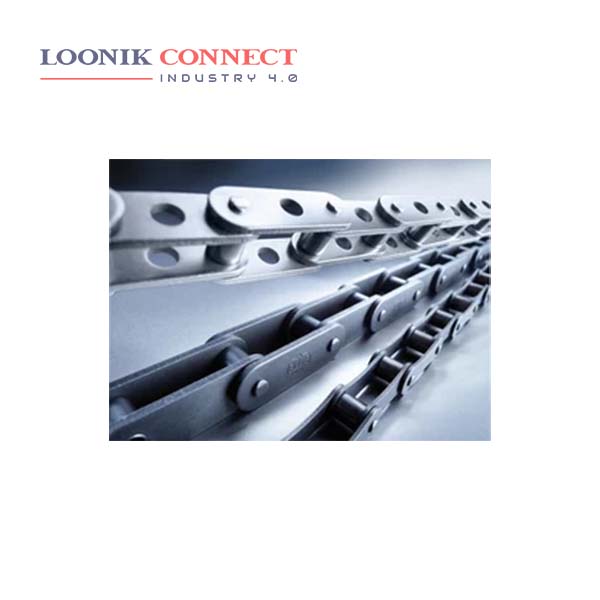Apart from their pitch, double pitch roller chains are constructed on the same basis as single pitch chains in accordance with ISO 606 and meet the same standard specifications in terms of their dimensions. Unlike short pitch chains constructed to standard ISO 606, these chains are intended for use in conditions that place less demand on chain speed and power transmission. The principle difference is that the plates of double pitch roller chains are twice the length of the plates fitted to standard roller chains. Chains from the range constructed to the American Standard include versions with normal plate thickness or thicker plates, as well as variants with smaller or larger rollers.
Riveting Links are made from the pins and outer link plates. These links are used between each roller link to form a roller chain. The pins and outer plates are a pressed to form a solid connection. This type of chain consists of five basic components: pin, bushing, roller, pin link plate and roller link plate. Manufacturers make and assemble each of these subcomponents to precise tolerances and heat treat them to optimize performance. Roller Chain operates at high efficiency on drives with reduction ratios up to 3:1, but can be used effectively for drives up to 5:1 reduction. Higher ratios are not recommended but on some very slow speed drives reductions up to 10:1 have been used.
Roller chain or bush roller chain is the type of chain drive most frequently used for mechanical power transmission on numerous types of domestic, industrial, and agricultural machinery, including conveyors, printing presses, cars, motorcycles, and bicycles. Roller chains are used for both drive and conveyor applications. There is a separate series of chains for each application area. In most case the roller chain type is often stamped on the outer link plate; for example, 50 if ANSI or 10B if BS size. The first digits refer to the pitch of the chain and vary according to the series.










